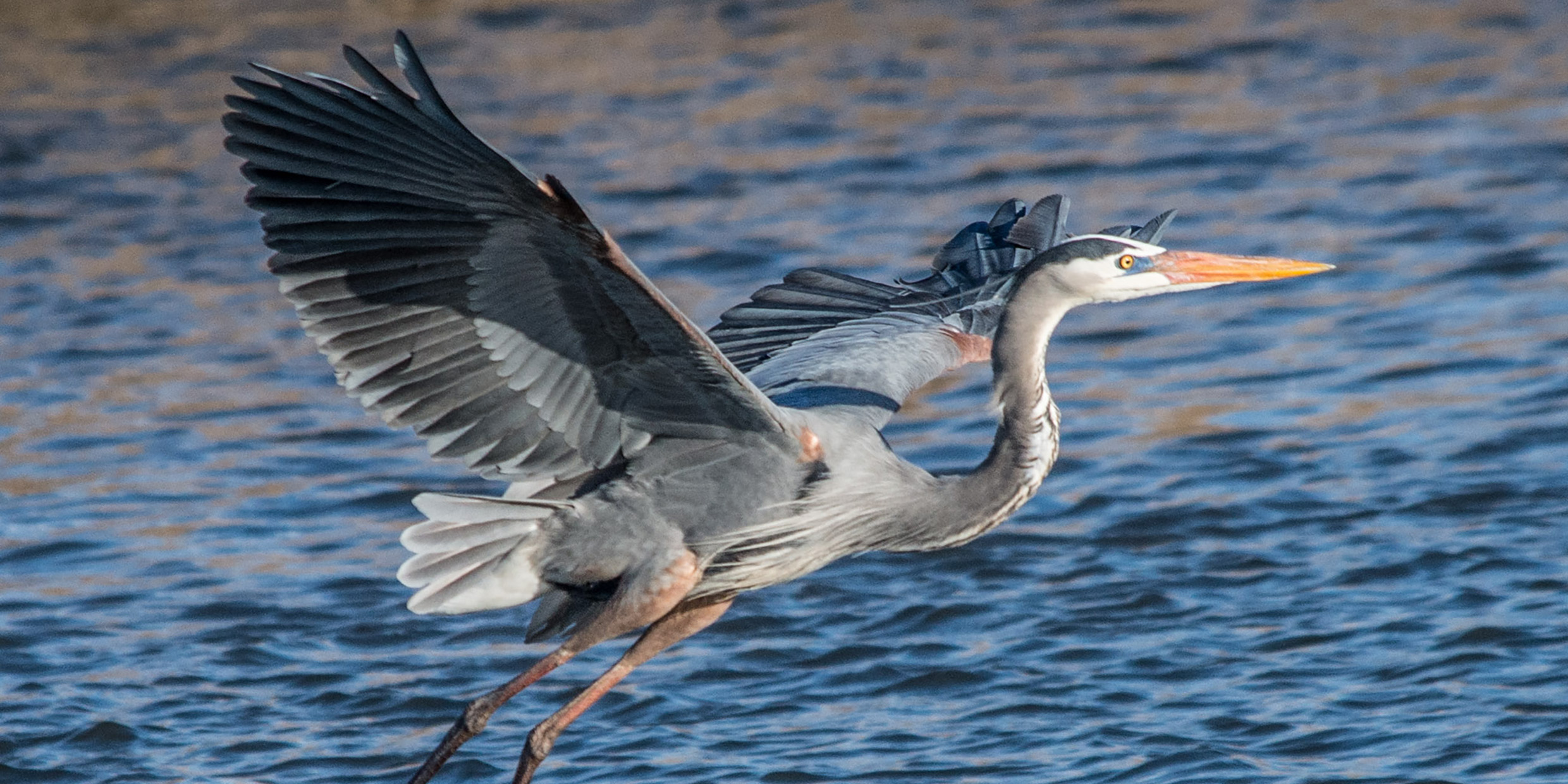Originally published 5 December 1983
Even before I saw him I felt the shove of his huge wings. There was a sound of air moving. I turned and there he was, his zeppelin bulk rising inexplicably into the air, his long legs dangling behind like mooring lines. The great blue heron, Ardea herodias.
The heron lifted from the cattails into the cold clear air of November with a small bright fish in his bill and an aureole of black feathers about his head. He lifted into the air and made a long low circuit of the marsh. I lived for a moment in that big bird’s skin, in that wrap of slate-grey feathers, afloat on those huge bedsheet wings.
The great blue heron is the most widespread of North American herons. In southern states and along the coasts of Maine and Nova Scotia it nests in colonies of hundreds. To the amateur birdwatcher in the environs of Boston, the great blue heron is best known as a lone stalker of the waterways and ponds. Few other birds convey such majesty and magic.
Still as a statue
John James Audobon drew the great blue heron in Louisiana in 1821. “You might imagine what you see to be the statue of a bird” he wrote in his journal, “so motionless is it. But now he moves; he has taken a silent step, and with great care advances; slowly does he raise his head from his shoulder, and now, what a sudden start! His formidable bill has transfixed a perch.”
“Big cranky,” “long john,” “poor joe,” the nicknames we have given this bird betray our affection. A century ago that affection seems to have extended to the table. in his 1867 “Birds of New England and Adjacent States,” Massachusetts ornithologist Edward Samuels noted that the great blue heron was considered by many a palatable dinner. As if to test that assertion, Samuels unloaded his own shotgun into a heron nest. He declared the two “squabs” that tumbled out to have a taste of duck, but with a strong flavor that was not pleasant.
Making a comeback
The slaughter of herons for sport, table or millinery brought the great blue heron to its lowest ebb early in this century. Now, protected by law and increased public awareness, the bird is making a comeback.
Richard Forster, of the Massachusetts Audubon Society, believes the birds are now as numerous in New England as at any other historic time.
Forster attributes the heron’s brighter fortunes to a reduction in the use of pesticides and an extension of the bird’s natural breeding habitat. The latter development resulted from the reintroduction of beavers into western Massachusetts in the 1920s. Beaver ponds are ideal heronries. Breeding colonies of five to 30 pairs are now common in Berkshire and Worcester counties.
There is a thriving colony of breeding herons in Westboro, in an area of man-made inundation. The availability of suitable nesting areas seems to be the only constraint on the heron’s continued recovery.
On Cape Cod the great blue heron is a winter resident. The birds of other areas of New England move south for the winter. Growing colonies of herons to the north, especially along the coasts of Maine and Nova Scotia, account for the greater number of migrating birds sighted in spring and fall as solitary hunters on our local streams and ponds.
Waiting for prey
The great blue heron is most often seen at dawn and dusk, neck curled back, standing on one cornstalk leg in shallow water, waiting for his prey to come within striking distance. His taste is eclectic. He feeds upon small fish, salamanders, lizards, snakes, crayfish, grasshoppers, dragonflies and mice. When startled the heron will emit a low-pitched croak, to my ear similar to the sound black ice makes on a winter pond.
John Burroughs, the famous American naturalist of the turn of the century, wrote this of the heron: “Our blue heron will stand for hours at a time on the margin of some lake or pond, or on the top of some forest tree near the water, and the eye might easily mistake him for some inanimate object. He has watched among roots and snags and dead treetops for so long that he has naturally come to look like these things.”
Roots and snags and dead treetops are exactly the images that come to mind when we see this magnificent bird standing alone and still on a local marsh or pond. But when he lifts from the water and ascends the air with the push of his six-foot wingspan, hearts and spirits rise with him.



